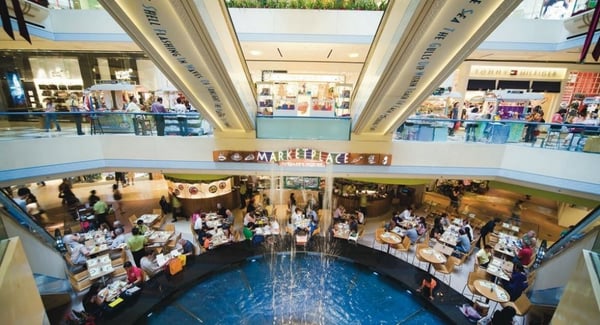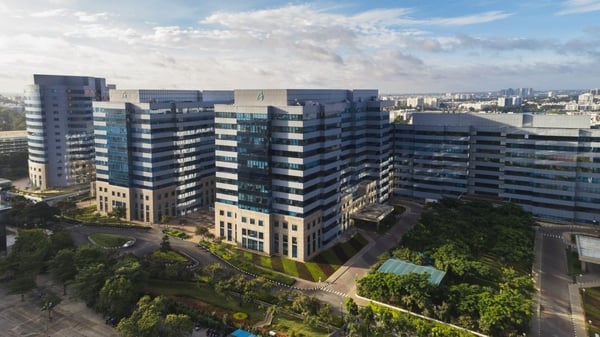Having recently celebrated its 55th year of independence, Singapore is a relatively young nation. Yet, the country has quickly risen to prominence on the international stage, becoming well-regarded as a regional and global business hub. Several key factors have contributed to this success, including great foresight, a conscious push for entrepreneurship and innovation, as well as a vision to help other countries strive towards similar success.
Chong Siak Ching, CEO of the National Gallery Singapore, is a woman of many hats – apart from holding multiple board directorships, she is also the former-CEO of Ascendas and the former-deputy chairman of SPRING Singapore, among her other current and previous roles which have played a part in contributing to the country’s development. In a webinar with EHL, she shared with us the story of how her career has grown alongside the development of Singapore and Asia.
Career Path
You have had a very illustrious career. What is one red thread that runs through all the different roles that you’ve held in the past up till today?
It’s always been about being in service of a larger good – a bigger purpose than the business or the product or service offering. For example, in Ascendas, we built environments that are conducive for workers to excel, to be productive, to be innovative, and to be motivated to do their best. In the case of the National Gallery, it’s also about being in service of the various public and private stakeholders that we try to draw to the Gallery. The ultimate purpose is to create an inclusive, creative, and thoughtful society through art. So whether it’s real estate or art, I think that they are all means to an end; and the end is the impact that one creates, whether it’s a motivated workforce or a more thoughtful society – in other words, having a core purpose in what we do.
At the time of your graduation from NUS (National University of Singapore) in 1981, as you said, the market was awash with opportunity and Singapore was undergoing a large-scale development and redevelopment, so why did you choose to work for DBS Land?
DBS Land (merged with Pidemco Land in 2000 to form CapitaLand) was a subsidiary of the Development Bank of Singapore (DBS), so it was very much involved in the development of Singapore and what appealed to me was that greater purpose of what they do – creating real estate that supports the economic development of Singapore.
The project that I’m most proud of is the Raffles City. At that time, Raffles City was the most ambitious and single largest development right in the heart of the city. It’s a very historic landmark, where Raffles Institution used to sit. It was the first mixed-use development project with two hotels and at that time, one of the world’s tallest hotels – The Westin [Stamford] (now known as Swissôtel The Stamford) – as well as an office and shopping centre. To be part of that kind of ground-breaking project taught me a lot of things, so it was quite an obvious choice to select as an employer.
You moved from real estate to arts and culture. Why and how did that happen?
I think it’s another opportunity to contribute to nation-building, but this time through arts and culture. The National Gallery is also two big monumental pieces of real estate – the former Supreme Court and the former City Hall. Also, after helming Ascendas for over 12 years, I felt that it was time for a new leader to take the company to new heights. I do not believe in overstaying a role, because we run the risk of becoming myopic and taking things for granted. It’s always good to allow fresh leadership and fresh talent to emerge, whether from within or from outside.

Raffles City Shopping Centre. Source: CapitaLand
Past Development Journey
With the projects you were involved in, how were those visions built, captured, and materialized? What was the process and the team like?
Singapore was also very lucky to have visionaries like Mr Goh Keng Swee, Mr Philip Yeo who was the chairman of EDB (Economic Development Board), and our founding father, Mr Lee Kuan Yew. They were the architects of Singapore’s economic development and our progress and success as a nation.
Singapore has always seen the need to think long-term and to be very forward-looking. We are probably one of the very few countries that plan so far ahead into the future. Back in the ‘80s, our population was probably well under three million – but Singapore was already planning for a possible population of many millions more. And it was not just about dreaming about that population, but looking at how that translates into the way we plan our roads, neighbourhoods, housing etc. This very forward-thinking view is important to making sure that we will always have room for new investments, for local industries and the population to grow. In that sense, it’s really important to have such visionaries to continue to plan for the future of Singapore.
Can you tell us about how it was when you first started with JTC and Ascendas, and your journey with them?
When I first joined the JTC Group, it (the JTC subsidiary)was a very small company – I was probably employee #18. At that time, the company was called Technology Parks and it was tasked to develop a science park, as well as convert some of the old industrial estates into a more upmarket, technology-related park. I found that when you start something from scratch with a small group of people, you can influence and mould the culture of the organization. The previous General Manager had already started the company on the right foot with a focus on the customer; and I continued to develop that. I brought it through a rebranding, and we named it Arcasia. As we grew out of Singapore and into other Asian countries, Arcasia became Ascendas as it merged with another JTC entity called JTC International. Ascendas started out in 2001 and I was the founding CEO, where I remained until 2013 when I left to join the National Gallery.
What was really rewarding was that we were able to share and export Singapore’s expertise in developing integrated communities, that could create employment and bring investment into these countries. Ascendas built the first IT park (International Tech Park Bangalore) in Bangalore, India, which was known as the Silicon Valley of India. That first IT park has now been kind of replicated not just by Ascendas, but by many of the other Indian developers across India, creating millions of jobs for the Indian IT workers and that has just been amazing.
Culture and Diversity
You mentioned being able to influence and mould the culture of an organization as a GM. As the company grew, how did you ensure that same focus on culture?
I think an organization’s culture needs to be co-created, co-owned, and lived by everyone in the organization. What a leader would then have to do is to create that process of co-creation and build that co-ownership around what the entire staff feels is the right culture for the organization to succeed in fulfilling their mission. It’s important to have a core culture, but also the flexibility to adjust to the organization’s needs.
When you have a core culture, you will be able to bring it across locations. We believe in putting the customer first, listening to their needs and designing solutions that suit their needs, and to always be in service to the customer. That’s the core Ascendas culture. Then in India, our Indian colleagues will have their own culture in how they will go about doing that – and in the Philippines and China, it will be slightly different. When you have a diverse workforce, one should embrace that diversity and try to bring out the best of each and see whether you can imbue that into other aspects, other countries. At the headquarters in Singapore, which also has its own unique way of doing things, we always try to have our international colleagues join us for major work planning sessions and strategy sessions. They also travel between countries to learn from the unique ways of operationalizing the Ascendas culture.
Helping to Develop Economies
As Singapore and Ascendas were in the growth phase and you were looking at opportunities and scanning the markets, how was the process of market development?
The Bangalore project was G2G (government-to-government) at the highest level. The then-Prime Minister of India, Mr Narasimha Rao, approached our Prime Minister, Mr Goh Chok Tong, and asked if Singapore could help to contribute to India’s economic development. India, in the early-90s, had just opened its economy, so they were looking at the models of other countries who had been successfully attracting investments and developing infrastructure for economic development. I remember flying to Bangalore with Mr Philip Yeo in the middle of the night to look at the site, which had some coconut trees with nothing around it for miles, and we were asked to create an IT park there because India had IT talents. Today, the Bangalore IT park is a thriving metropolis and many companies have made it their home.
These examples, at the G2G level, are where Singapore can be helpful to our neighbours and other countries; we can share the road map and model that we’ve adopted, whilst adapting it to their needs and situations. I always fear us going and saying, “You do this. You do that,” without knowing the context and local environment – that cannot work. We need to go there [personally] and find local partners. For example, Mr Ratan Tata became our partner in Bangalore, and they’ve been extremely helpful in helping us navigate the very complex environment in India, in both the business as well as regulatory government environments. And you could say the same for the Suzhou Industrial Park, which today is again, another very thriving community.

International Tech Park Bangalore (ITPB) – Bangalore’s first IT park. Source: CapitaLand
Over the last few decades, some economies in Asia have risen as expected, some have not. Which countries are the ones that people were looking out for in the past and today; how have they done?
In the ‘90s, there were a lot of economies opening up, not just China and India, but Indonesia, Vietnam, Thailand etc. These were all developing economies with little infrastructure and skilled labour to support all the industries that these countries wanted to promote. But I think one of the key success factor is how business-friendly the governments were, because investors that go into these countries were taking a lot of risk. And if they were to bring their technology, investment dollars, and plants into these countries – and face a lot of red tape, they’re not going to open another plant. So, it was important that the governments, rather than red tape, try to roll out the red carpet. And once one succeeds, another will want to come in and it snowballs from there. In other words, those countries that were less bureaucratic and more business/investment-friendly took off faster than the rest.
Entrepreneurship and Innovation
Today, we speak a lot about entrepreneurship and innovation, and all countries are investing into that, hoping that the next unicorns will come from their countries. Could you tell us more about your role with SPRING Singapore in this context?
SPRING Singapore (merged with International Enterprise Singapore in 2018 to form Enterprise Singapore) at that time, was in charge of promoting SMEs (small and medium-sized enterprises). We knew that it was foresight that would drive growth, and our next stage of development would be innovation and entrepreneurship. We knew that we needed more start-ups; companies with new products and innovations that would bring us up the next ‘S-curve’. But it was an uphill task – there weren’t enough start-ups and because the environment wasn’t conducive, there weren’t a lot of venture capitalists. So SPRING tried to build that environment and bring in VCs from overseas and tried to learn from Silicon Valley. We also provided grants to companies to take risks and start new projects, as well as connect them with successful start-ups around the world. We also encouraged banks to give loans to these companies, even though they didn’t have a track record.
It was a long struggle, but I think that when you’ve laid the foundations and put everything in place, you just need that spark for it to thrive. Now, I would say that Singapore is thriving in start-ups. We even have start-ups from Indonesia coming here to set up their companies. They see that Singapore has the necessary infrastructure for them to grow and reach out to established companies to partner, and then leapfrog into the region and the rest of the world.





